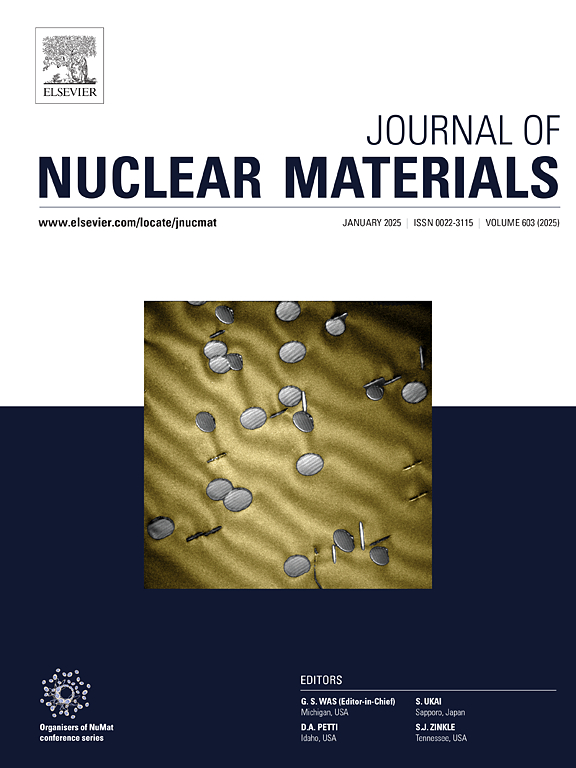The role of pressure in carburisation: Crack dynamics in Type 316H austenitic stainless steel under CO2 environments
IF 2.8
2区 工程技术
Q3 MATERIALS SCIENCE, MULTIDISCIPLINARY
引用次数: 0
Abstract
The oxidation and carburisation of steel in advanced gas-cooled nuclear reactors limit the life of key components during plant operation. To achieve a mechanistic understanding of the origin of carburisation phenomena, simulation or replication of service exposure conditions is needed. Laboratory tests are usually performed to accelerate processes such as crack initiation and growth in the material, and to simulate plant conditions as precisely as possible. This paper describes the results of carburisation data analysis of AISI Type 316H stainless steel under several CO2 gas exposure conditions. The behaviour of ex-service welded pipe components from advanced gas-cooled reactors at service temperature and pressure is compared to a range of specimens loaded and cracked in air and under surrogate/simulated CO2 conditions. Both atmospheric pressure and pressurised CO2 gas (4.14 MPa) conditions were studied. Microstructural characterisation of the crack tip region and the bulk/matrix of the specimens was performed using advanced electron microscopy techniques. The regions ahead of the crack tips were systematically analysed as they have a potential to significantly influence crack propagation behaviour. This study shows a significant effect of carburisation at the crack tip compared to the bulk of the material, but only for pressurised CO2 conditions, whereas atmospheric pressure CO2 conditions more closely resembled the specimen exposed in air. Importantly, this study reveals that in simulated experiments, pressurised CO2 environments are essential to replicate the carburisation behaviour observed in ex-service conditions.

求助全文
约1分钟内获得全文
求助全文
来源期刊

Journal of Nuclear Materials
工程技术-材料科学:综合
CiteScore
5.70
自引率
25.80%
发文量
601
审稿时长
63 days
期刊介绍:
The Journal of Nuclear Materials publishes high quality papers in materials research for nuclear applications, primarily fission reactors, fusion reactors, and similar environments including radiation areas of charged particle accelerators. Both original research and critical review papers covering experimental, theoretical, and computational aspects of either fundamental or applied nature are welcome.
The breadth of the field is such that a wide range of processes and properties in the field of materials science and engineering is of interest to the readership, spanning atom-scale processes, microstructures, thermodynamics, mechanical properties, physical properties, and corrosion, for example.
Topics covered by JNM
Fission reactor materials, including fuels, cladding, core structures, pressure vessels, coolant interactions with materials, moderator and control components, fission product behavior.
Materials aspects of the entire fuel cycle.
Materials aspects of the actinides and their compounds.
Performance of nuclear waste materials; materials aspects of the immobilization of wastes.
Fusion reactor materials, including first walls, blankets, insulators and magnets.
Neutron and charged particle radiation effects in materials, including defects, transmutations, microstructures, phase changes and macroscopic properties.
Interaction of plasmas, ion beams, electron beams and electromagnetic radiation with materials relevant to nuclear systems.
 求助内容:
求助内容: 应助结果提醒方式:
应助结果提醒方式:


